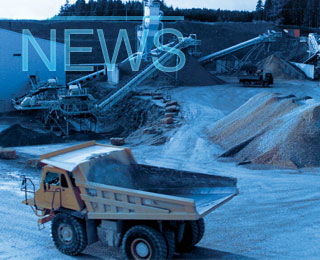Following the mediation session, McInnis Cement, the CQDE (Centre québécois du droit de l'environnement), the CREGIM (Conseil régional de l'environnement Gaspésie-Îles-de-la-Madeleine) and Nature Québec have agreed to the creation and operation of an Environmental Committee to monitor the environmental activities of the cement plant. A first meeting will be held as soon as possible.
The mediation also led to specific commitments regarding GHG emissions of contaminants, and impacts on marine mammals and aquatic fauna. It should be recalled that this mediation process resulted from the agreement with McInnis when CQDE withdrew from the proceedings filed last August against the Environment Minister in which McInnis Cement was an impleaded party.
Following this mediation, McInnis Cement reiterated its commitment to pursue its efforts aimed at using biomass to substitute a significant portion of its thermal operation requirements. To support these efforts Mcinnis committed $600,000 over the next three years towards feasibility or technical studies and projects to reduce GHG such as the use of biomass. In addition, the Environmental Committee will examine the possibility of implementing a mechanism for using surplus generated by emission rights into projects to reduce GHG.
McInnis Cement also confirmed its commitment to implement the SNCR technology to reduce emissions of contaminants from the plant, in order to comply with NESHAP standards. As for the impacts on aquatic fauna, the committee will follow-up on the commitments agreed to in the protocol signed with Fisheries and Oceans Canada (DFO).
The role of the committee is to monitor environmental matters and issue recommendations regarding the cement plant compliance with its commitments. In addition to monitoring greenhouse gases emissions and emissions listed in the NESHAP 2015 American standards, and monitoring the DFO protocol on impacts on marine mammals and aquatic fauna; the parties have agreed that the committee will also address the following matters: impacts on the physical environment, vegetation and wetlands, natural habitats and biodiversity, landscape, as well as any other environmental issue agreed to by the Environmental Committee. Committee members will have access to up-to-date information in order to efficiently fulfill their mandate.
Composition of the committee and operation
The Environmental Committee will be comprised of eight members: two citizens from the plant's impact zone (one of which is a member of the cement plant's Citizen Liaison Committee), a representative of the CREGIM, a representative of Nature Québec, a representative of the CIRADD (Centre d'initiation, de recherche et d'aide au développement durable), a representative of the ZIP Baie-des-Chaleurs committee, a representative of the Conseil de l'eau Gaspésie-Sud, and a representative of McInnis Cement. A professional from the Ministry of Sustainable Development, Environment and the Fight against Climate Change (MSDEFCC) will also be invited to attend meetings of the committee.
The Environmental Committee will meet at least four times a year and report on its activities to the plant's Citizen Liaison Committee. An independent facilitator will ensure the efficient functioning of the committee. The parties agreed to appoint Richard Loiselle, a former director of the École des pêches et de l'aquaculture du Québec in the role of facilitator. In the event of a disagreement , the Honourable Jacques Blanchard was appointed as an independent mediator. Mr. Blanchard is a retired judge and was born in the Gaspé region.
"We are pleased with the formation of this committee and the open-mindedness McInnis Cement has shown, particularly regarding measures to reduce GHG. It's a collaborative undertaking that gives us the tools to ensure an effective and rigorous monitoring of environmental commitments concerning the cement plant, in the short, medium and long term," said Michel Bélanger, President of CQDE.
"The Environmental Committee will provide a permanent framework to discuss the environmental aspects surrounding our project. Its creation demonstrates our willingness to address environmental issues in a spirit of openness and dialogue that is respectful of the community in which the project will place", added Christian Gagnon, CEO of McInnis Cement.
